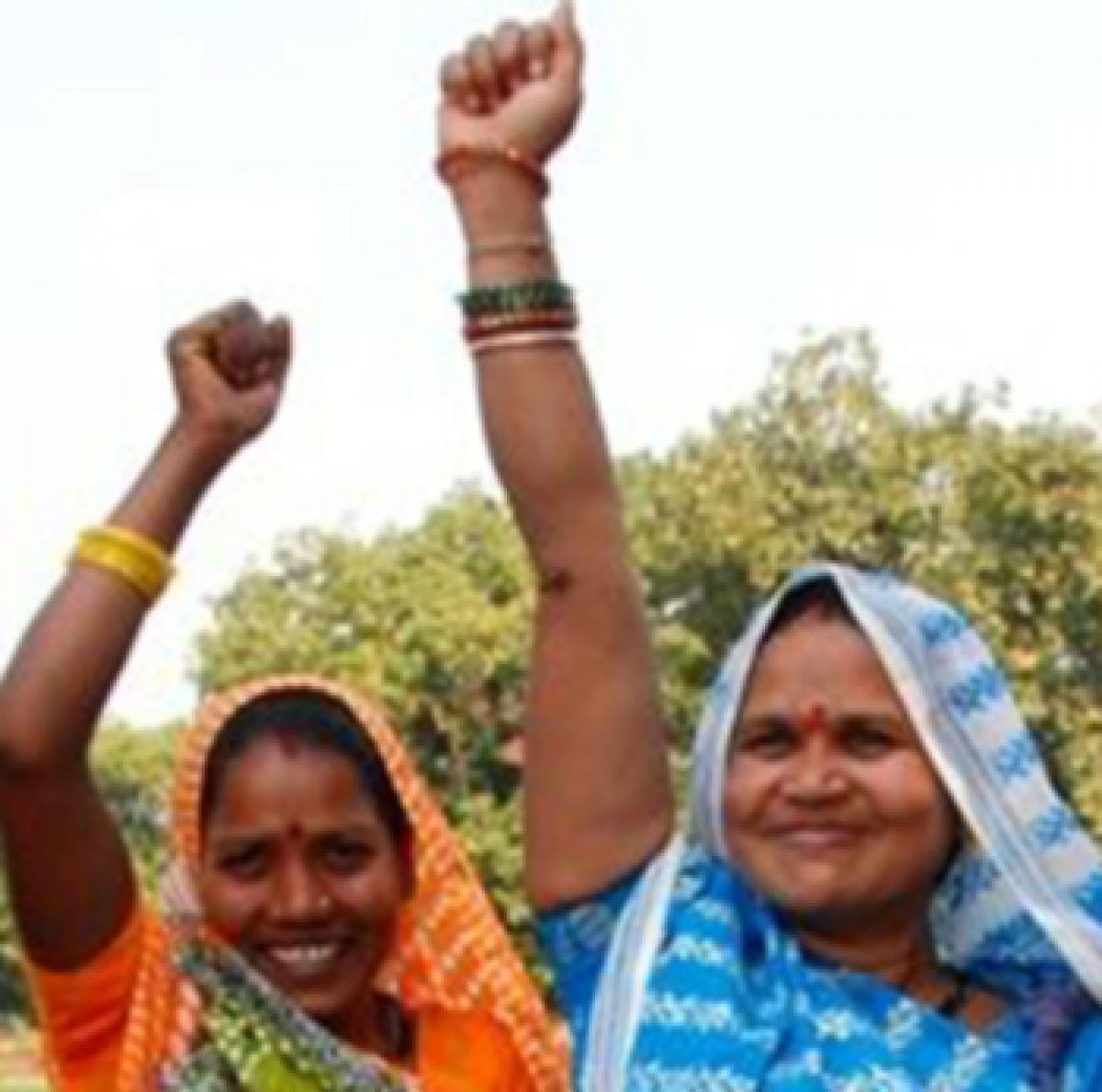Live
- Over 7,600 Syrians return from Turkiye in five days after Assad's downfall: minister
- Delhi BJP leaders stay overnight in 1,194 slum clusters
- Keerthy Suresh and Anthony Thattil Tie the Knot in a Christian Ceremony
- AAP, BJP making false promises to slum dwellers for votes: Delhi Congress
- 'Vere Level Office' Review: A Refreshing Take on Corporate Life with Humor and Heart
- Libya's oil company declares force majeure at key refinery following clashes
- Illegal Rohingyas: BJP seeks Assembly session to implement NRC in Delhi
- Philippines orders full evacuation amid possible volcanic re-eruption
- Government Prioritizes Welfare of the Poor, says Dola Sri Bala Veeranjaneyaswamy
- Two Russian oil tankers with 29 on board damaged due to bad weather
Just In

A recent global study of almost 22,000 organisations worldwide reveals that companies in just five countries have at least 30% senior women executives, with only Norway exceeding the 30% mark for women on company boards. The research shows that companies with at least 30% women in leadership can achieve up to a 6 percentage point increase in net margin.
A recent global study of almost 22,000 organisations worldwide reveals that companies in just five countries have at least 30% senior women executives, with only Norway exceeding the 30% mark for women on company boards. The research shows that companies with at least 30% women in leadership can achieve up to a 6 percentage point increase in net margin. While gender parity in business varies widely across the globe, most countries are still far below the 30% threshold for women CEOs, women on boards and women executives.
Data shows that 70% of the 1.2 billion people living in poverty are females. Women do more than 67% of the hours of work done in the world but earn only 10% of the world’s income and own only 1% of the world’s property. Women are paid 30-40% less than men for comparable work on an average. 60-80% of the food in most developing countries is produced by women. Women hold between 10-20% managerial and administrative jobs. Women make up less than 5% of the world’s heads of state. 60% of the 130 million children in the age group of 6-11 years, who do not go to school, are girls. Approximately 67% of the world’s 875 million illiterate adults are women. 3 out of 5 women in Southern Asia and an estimated 50% of all women in Africa and in the Arab region are still illiterate.
Although men still have the most privileges with regard to access to land, credits and other agricultural inputs, one can’t speak of agriculture without women. Women play a pivotal role in the agriculture all over the world.. Data reveals that there are 500 million small-scale farm families around the world, and 70% of the agricultural work on these farms is done by women. Data of FAO illustrates that women could increase their productivity by up to 30% if they had the same access as men to productive resources. Where men tend to focus more on economic gains, women’s ultimate concerns tend to be food sovereignty and nutrition, social stability and peace, and the conservation of biodiversity and natural resources.
Women's empowerment is now widely recognised as integral and inseparable parts of any sustainable strategy for pro-poor development and decent work. Studies have shown that countries that have taken positive steps to promote gender equality have substantially higher levels of economic growth. Gender equality and women's empowerment are essential components of poverty reduction strategies.
As stated in international agreements, gender equality of opportunity is a key goal in and of itself as part of an international commitment to women's human rights and gender justice. As such, it is also an integral part of any Decent Work strategy. Women are statistically the global majority. Enabling women to realise their full potential requires removing gender inequalities and discrimination which constrain them at every level. It also requires affirmative action to enable women, and also men, to promote and benefit from this change.
There is much evidence to suggest that in a world of limited resources, gender inequality indicates that an economy is operating below potential. Prof Berta Esteve-Volart estimates that the economic costs of discrimination against women in the labour market are large: a 10% increase in the female-to-male ratio of managers increases GDP per capita by 2%, while a 10% increase in the female-to-male ratio of total workers increases GDP per capita by 8%.
Empowering and educating girls and women and leveraging their talent and leadership fully in the global economy, in politics and in society are fundamental elements of the new models required for the country for the “take-off”– that the classical economist Rostow refers to in his ‘Stages of Economic Growth.’ Prof Amartya Sen defines capability as the reflection of a person’s freedom to lead one type of life or another.
Assessing a woman’s capability for the purpose of growth or empowerment of the individual, we can infer assume the following function: Woman’s capability (Ω) = f (N, L, K, S, U) where f denotes “function of,” and N is land and natural resources, L is labour, T is technology, K is capital and U is cultural and institutional complex of a society. Evidence suggests that lower access to productive inputs, such as land or capital, is one of the root causes of the productivity gender gap. It has been observed by many economists that effective and well-chosen policies can help enhance the speed at which outcomes for women catch up with those of men.

© 2024 Hyderabad Media House Limited/The Hans India. All rights reserved. Powered by hocalwire.com







